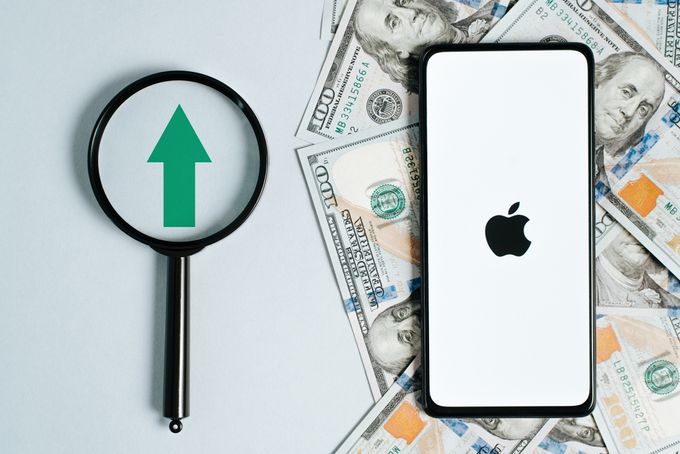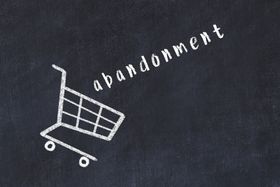5 KPIs Apple Tracks to Grow During a Recession
Updated April 24, 2023

In a scenario where tech companies are facing the brunt of the recession, Apple beat the expectations of Wall Street experts despite lower-than-expected iPhone demand. The tech giant reported just over $90 billion in revenue for its fourth quarter of 2022—with profits reaching approximately $20.7 billion.
This surprising growth is because of the company’s focus on its SaaS segment. Apple’s paid subscription services, such as Apple Music, Apple Care, Apple News+, and Apple TV+, posted $19 billion in sales. The company now has over 900 million paid subscriptions across these services.
Apple CFO Luca Maestri pointed out that these results demonstrate the company’s ability to perform well in the face of challenging and volatile macroeconomic scenarios.
Let's look at the lessons we can learn from the 5 key KPIs Apple monitors to remain successful.
1. Committed Monthly Recurring Revenue (CMRR)
CMRR shows Apple their monthly recurring revenue (MRR) after taking known bookings and churn data into account. This means that Apple can determine how much revenue they receive every month from recurring subscriptions, including the effects of any downgrades and cancellations.
The CMRR formula isn’t fixed, but typically starts with the MRR, then the known new bookings are added, while known cancellations and downgrades are subtracted.
CMRR = Existing CMRR + New Bookings + Expansion – Churn – Downgrade Bookings
CMRR is valuable to any SaaS business because it gives them the most realistic assessment of their health. It can identify clients who may churn or may benefit from increased use limits or other relevant products, offering the business an opportunity to upsell. Considering Apple's 900+ million paid subscribers, this is a metric that works.
2. Customer Acquisition Cost (CAC) Payback Period
Whether you sell products or services, you know this fact very well: acquiring customers comes with a cost.
- CAC calculates the costs your business incurs to acquire a customer, including your marketing and advertising activities, and paying your sales and marketing teams.
- CAC payback period is the amount of time it takes your business to recoup CAC. The shorter it is, the better for your business.
To calculate the CAC payback period, you’ll need to know the CAC and MRR. The CAC is the total costs divided by the number of customers gained.
CAC Payback Period = CAC / MRR
Calculating both CAC and CAC payback period helps Apple to see how efficient they are in acquiring customers. To break even, the payback period should take between five and twelve months, according to industry norms.
Apple claims that 50% of their customers are new to their products, so a lot of effort is put into customer acquisition. But with a Net Promoter Score (NPS) of 72, their customer retention levels are high and they easily recoup their CAC.
» Discover the benefits of performing a customer retention analysis
3. Customer Lifetime Value (CLV)
CLV tells Apple if their customer is profitable. Their CLV increases as the customer stays with the company longer and keeps making purchases.
To measure CLV, use either the customer lifetime rate or churn rate.
CLV = Average Revenue Per Unit x Customer Lifetime (in months)
CLV = Average Revenue Per Unit / Customer Churn Rate (in months)
You can use CLV in conjunction with CAC to determine the return on investment (ROI) for each customer and better guide your marketing and sales strategies. CAC equal to one-third of your CLV is the sweet spot you should aim for.
Your buyers may spend less on non-essentials during a recession. You can persuade them with discounts or incentives or focus on what they actually need or want.
During the pandemic, Apple launched a virtual fitness program and a subscription bundle called Apple One for those working from home. Over the past few years, Apple's subscriber base has grown substantially, mostly as a result of the pandemic and their efforts during that time.
» Learn how to double your CLV
4. Cash Flow
Small businesses can suffer from ineffective cash flow management, especially during recessions. To be better prepared for the future, you might benefit from doing a cash flow analysis.
This analysis is important because it allows you to make smart decisions about staffing levels, marketing spend, and other expenses during times when cash flow is tight.
Due to overhiring during the pandemic, several tech powerhouses are currently laying off employees. However, Apple is not one of them. Apple has demonstrated its mastery of cash flow forecasting by not significantly expanding its employment rate over the past two years.
» Haven't done cash flow forecasting before? Here are the pros and cons
5. Churn and Renewal
- Churn rate is the percentage of new signups that cancel their subscription after a certain time period.
- Renewal rate is the percentage of customers who extend or renew their subscriptions when their initial term ends.
Churn rate is negative because it indicates customer losses, whereas renewal rate is positive since it indicates customer retention. Pricing, user interface, or content can cause it. Knowing the source of high churn can help you develop strategies to reduce it.
» Discover the 5 most important sales KPIs for customer retention
Tracking Churn Rate
Basic churn rate is determined by the number of customers that stop using your services, downgrade, or stop paying their invoices, divided by your total number of customers, multiplied by 100.
Basic churn rate =
(Number of customers who have churned / Number of customers) x 100
Monitoring your monthly and annual churn rates will help you to track trends and make comparisons. You can also use it as a tool to determine what changes influence churn.
An Apple a Day...
As Apple has demonstrated, a strong business model and effective KPIs will help you enjoy success even during the toughest of economic conditions. The key to riding out the storm is preparation, and tracking these KPIs can make you more aware of how they impact your business.








